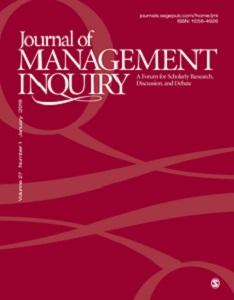Academic articles
Practitioner articles
Working papers
Books
Book chapters
Case studies
Other publications
Subject(s)
Entrepreneurship; Human resources management/organizational behavior; Information technology and systems; Management sciences, decision sciences and quantitative methods; Marketing; Product and operations management; Strategy and general management; Technology, R&D management
Keyword(s)
Hidden Champions, digital transformation, digitalization, customer, disruption, challenges, digital experts, IT specialists, innovation, agile thinking
In this joint study, the Hidden Champions Institute (HCI) of ESMT Berlin and IDG Research Services look into the question of whether the hidden champions are leading the digital transformation of the German economy. More precisely, the study compares the digital transformation among hidden champions to other companies and analyzes their challenges. The result shows that the German hidden champions take the digital revolution seriously and are working vigorously on positioning themselves more digitally, both regarding internal processes and in relation to new business models. In the process, they are considerably quicker and more successful than many small and medium-sized enterprises (SMEs) that are not market leaders. However, in comparison to large corporates, the digital transformation of the hidden champions frequently lags behind, requiring them to learn from companies within their own ranks that are among the global leaders in the digital transformation. There are indeed such “hidden digital champions”, as the study shows.
With permission of IDG Business Media
German edition of the study: Hidden Champions - Champions der digitalen Transformation?.
Pages
32
Subject(s)
Economics, politics and business environment; Information technology and systems; Technology, R&D management
Keyword(s)
Blockchain, distributed ledger, strategy, policy, innovation
In its 2018 coalition agreement, the German federal government has set itself the goal of adopting a "Blockchain strategy" in this legislative period. As part of the planned promotion of Distributed Ledger and Blockchain technologies, the government wants to create a framework for the development and application of these technologies and test them in public administration. The Federal Ministry of Economics and Energy and the Federal Ministry of Finance are jointly in charge of developing the strategy.
On this occasion, in a workshop on 3 July 2018 at the Digital Society Institute of ESMT Berlin, 35 experts from politics, business and science discussed how a national blockchain strategy can be practically organized.
The discussion focused on the questions of what goals such a strategy should have, what the central enablers and appropriate framework conditions for the development and application of Distributed Ledger technologies such as blockchain can be in Germany, and what role the state plays in promoting the technology and managing risks in this technology field.
Sarah Basic and André Eid (Federal Ministry for Economic Affairs and Energy), Dr. Christian Hampel (Ernst & Young GmbH), Dr. Jürgen Kohr (Fujitsu), Dr. Manfred Lochter (Federal Office for Security in Information Technology) and Kai Wagner (Jolocom) gave input speeches to the debate.
Based on the workshop discussion, this paper outlines requirements for a national blockchain strategy.
[Die Bundesregierung hat sich in ihrem Koalitionsvertrag das Ziel gesetzt, in dieser Legislaturperiode eine „Blockchain-Strategie“ zu verabschieden. Im Rahmen der geplanten Förderung von Distributed Ledger und Blockchain Technologien sollen die Rahmenbedingungen für Entwicklung und Einsatz der Technologien verbessert und diese auch in der öffentlichen Verwaltung erprobt werden. Mit der Erarbeitung der Strategie sind federführend das Bundesministerium für Wirtschaft und Energie (BMWi) und das Bundesministerium der Finanzen (BMF) betraut.
Aus diesem Anlass erörterten in einem Workshop am 3. Juli 2018 am Digital Society Institute der ESMT Berlin 35 Experten aus Politik, Wirtschaft und Wissenschaft, wie eine nationale Blockchain-Strategie praktisch organisiert sein kann.
Im Zentrum der Diskussion standen die Fragen, welche Ziele eine solche Strategie haben sollte, was zentrale Ermöglicher und geeignete Rahmenbedingungen für die Entwicklung und Anwendung von Distributed Ledger Technologien wie Blockchain in Deutschland sein können, und welche Rolle dem Staat bei der Förderung und Bekämpfung von Risiken in diesem Technologiefeld zukommt.
Impulsvorträge für die Diskussion hielten Sarah Basic und André Eid (Bundesministerium für Wirtschaft und Energie), Dr. Christian Hampel (Ernst & Young GmbH), Dr. Jürgen Kohr (Fujitsu), Dr. Manfred Lochter (Bundesamt für Sicherheit in der Informationstechnik) und Kai Wagner (Jolocom).
Auf der Grundlage der Workshop-Diskussion skizziert dieses Papier Anforderungen an eine nationale Blockchain-Strategie.]
Pages
14
Subject(s)
Economics, politics and business environment; Finance, accounting and corporate governance
Keyword(s)
Credit shocks, financial crisis, labor demand, employment, wages
JEL Code(s)
D92, G01, G21, J23, J31
We study the impact of exogenous funding shocks to German savings banks during the U.S. subprime mortgage crisis on the labor decisions of 30,000+ private and public firms in Germany. We find that firms with credit relationships with affected banks experience a significant decline in labor demand relative to firms with credit relationships with healthy banks, manifested in a simultaneous reduction in firm‐level employment and average wages. The employment effect is more pronounced in larger firms, while the wage effect is stronger in smaller firms. Both employment and wages go back to pre‐shock levels three years after the shock.
With permission of Elsevier
Volume
36
Journal Pages
16–27
Subject(s)
Strategy and general management
Keyword(s)
Status, competition, tournaments
Merton often envisioned status growth as a process of stepping across a boundary between one status grade and another more elite status grade. Such boundaries include the border between graduate school and a top academic department that young researchers try to traverse, or the frontier between scientists outside the French Academy and scientists inside the French Academy. As it is now common to measure status continuously using network data, the behavioral ramifications of status boundaries have been understudied in recent research. In this essay, we focus on competitive behaviors that emerge near a status boundary because of the desirability - as well as the “double injustice” - of the Matthew effect. Offering insights for future research, we discuss how these competitive behaviors are likely to delay, or even derail, status growth for those who are near a status boundary.
With permission of SAGE Publishing
Volume
27
Journal Pages
378–381
ISSN (Online)
15526542
ISSN (Print)
10564926
Subject(s)
Product and operations management
Keyword(s)
Discrete choice, rational inattention, information acquisition, non-uniform information costs, market inference
JEL Code(s)
D40, D80
View all ESMT Working Papers in the ESMT Working Paper Series here. ESMT Working Papers are also available via RePEc, EconStor, and the German National Library (DNB).
Pages
52
ISSN (Print)
1866–3494
Subject(s)
Information technology and systems; Technology, R&D management
Keyword(s)
Cybersecurity, information security
Book review of Paul Voigt, “IT-Sicherheitsrecht”, (IT security law), 2018
Secondary Title
Buchbesprechungen. Paul Voigt, IT-Sicherheitsrecht
Journal Pages
r81–r81
Subject(s)
Information technology and systems; Management sciences, decision sciences and quantitative methods; Marketing; Strategy and general management
Keyword(s)
Innovation, pricing, freemium, business model
Journal Pages
47–50
Subject(s)
Information technology and systems; Management sciences, decision sciences and quantitative methods; Technology, R&D management
Keyword(s)
Technology assessment, technology analysis, indicators
Betting on right technologies, selecting meaningful fields of application and thus steering technology developments with suitable properties in the right direction is crucial for the sustainable success of technology companies. However, due to the worldwide increase and rapid acceleration of research and development activities as well as the increasing integration of value chains, it is becoming increasingly difficult to correctly assess technology developments. At the same time, access to data and information has dramatically improved powered by the developments of the world wide web. Powerful information and telecommunication devices as well as software make large data sets easier to access and complex data analyses with new types of indicators possible. Thus, the possibilities of indicator-based technology assessments have also improved for companies that have very limited resources for technology analysis. In order to provide an up-to-date overview of which indicators and methods for technology analysis are currently used in practice and in science, the Chair of Innovation Management of the Free University Berlin conducted a survey of German-speaking experts* from business and science in November and December 2017. The results are presented in this report.
Pages
62
Subject(s)
Human resources management/organizational behavior
Keyword(s)
Anchor precision, negotiation entry, barriers-to-entry, first offers, social attribution, decision making
Precise first offers strongly anchor negotiation outcomes. This precision advantage has been previously documented only when the parties were already engaged in a negotiation. We introduce the concept of negotiation entry, i.e., the decision to enter a negotiation with a particular party. We predict that precise prices create barriers-to-entry, reducing a counterpart’s likelihood of entering a negotiation. Six studies (N=1,580) and one archival analysis of real estate sector data (N=11,214) support our barrier-to-entry prediction: Potential negotiators were less likely to enter a negotiation with precise versus round first offers. Using both statistical mediation and experimental-causal-chain analyses, we establish that perceptions of offer maker inflexibility underlie the precision barrier. Furthermore, we demonstrate that this inflexibility mechanism of precision is distinct from the mechanism (being offended) that creates barriers-to-entry for extreme first offers. The discussion theoretically integrates research on first-offer precision and extremity by offering the Precision-Extremity Model of First Offers.
With permission of Elsevier
Volume
148
Journal Pages
87–100
Subject(s)
Marketing
Keyword(s)
multivariate analysis
Volume
15th ed.,
ISBN
978-3-662-56654-1
ISBN (Online)
978-3-662-56655-8

